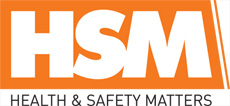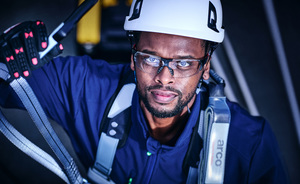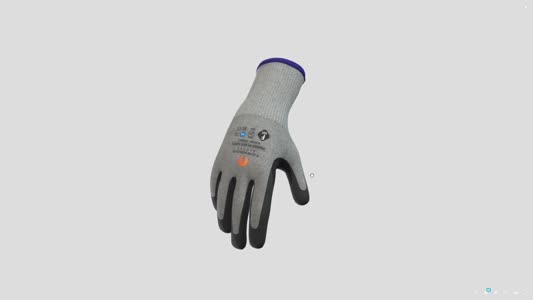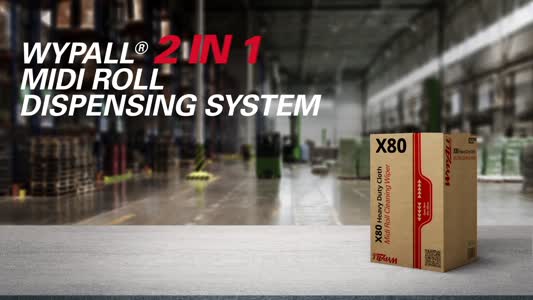
 |
Mark Sennett
Managing Editor |
 |
Kelly Rose
Editor |
Dressed for safety
23 September 2025
Today’s modern workforce needs and deserves workwear that stands up to the demands of the job. Simon Allan-Brooks looks at the benefits of selecting the right workwear for the task at hand.

SELECTING THE right workwear is about more than just picking the right uniforms, it’s about equipping a team with clothing that stands up to the demands of the job. The right workwear not only improves productivity, it keeps workers comfortable and safe. The regulations on workwear and safety products are stringent, with working conditions varying widely across industries, making the right choice is essential.
Assessing the work environment
The first step when choosing workwear is to consider the specific environment and tasks employees face. For example, construction and engineering roles demand robust, abrasion-resistant fabrics, while logistics and warehousing may require lighter, flexible garments for ease of movement. For outdoor roles, weather resistance and thermal protection are key, while indoor roles may prioritise breathability and comfort. All season outdoor roles may require a blend of both breathability and thermal protection to achieve what is known as “thermal comfort”.
When assessing the environment, it’s worth considering if the employee is customer facing or not. Workwear is a key part of a company’s image. Some distributors, including Arco, offer custom embroidery and printing services, to add logo or staff names to garments. This not only promotes a brand but also helps with team cohesion and customer recognition, personalisation also gives employees a sense of belonging.
Prioritising durability and quality
Workwear must withstand repeated wear, washing, and the rigours of daily use. Leading UK suppliers will offer garments made from high-quality materials such as reinforced cotton, polycotton blends, and ripstop fabrics. Features like triple-stitched seams, reinforced knees, and heavy-duty zips are hallmarks of durable workwear that lasts.
Comfort and fit
Comfort is crucial for productivity and morale. Ill-fitting or uncomfortable clothing can distract workers and even pose safety risks. Many top distributors, will provide a wide range of sizes and offer garments with ergonomic designs, stretch panels, and adjustable features to ensure a good fit for all body types. Breathable fabrics and moisture-wicking linings are also important for roles involving physical activity or variable temperatures.
Compliance and standards
Workwear is designed to protect workers from the unique hazards of the workplace, this could be moving objects, fire risks or chemicals to name a few. With workwear such as steel-toed boots, flame-resistant fabrics, high-visibility clothing, and chemical-resistant gloves it is essential that employee safety is the paramount factor when selecting equipment.
While workwear is not always classed as PPE, it still needs to meet certain standards, especially in regulated industries. For those responsible for procurement, it is essential to request up-to-date certification and clear product information from suppliers, verifying that each item has been independently tested and meets the necessary requirements. The BSIF provides authoritative guidance on selecting compliant products and understanding the applicable standards for different types of workwear.
If employees are entrusted with the sourcing and purchasing of their own workwear, it’s important that sufficient training and education on the indicators of compliant workwear is provided.
Industry-specific features
Different sectors require different workwear features. For example:
- Hi-vis workwear: Essential for construction, roadwork, and logistics, hi-vis clothing should comply with EN ISO 20471:2013 standards for visibility. This ensures the wearer is highly visible in both daylight and low-light conditions, meeting the latest UK and EU requirements for high-visibility garments.
- Flame-retardant clothing: For welding, utilities, or petrochemical work, flame-retardant, arc protection, and anti-static garments are a must. The relevant standards are EN ISO 11612:2015 (protection against heat and flame), EN ISO 11611:2015 (welding and allied processes), IEC 61482-2:2020 (arc flash protection), and EN 1149-5:2015 (anti-static properties).
- Weatherproofing: Outdoor workers benefit from waterproof, windproof, and insulated jackets and trousers. A layered approach to workwear is recommended. For waterproofing, ensure compliance with BS EN 343:2019 for clothing protection against rain.
- Specialist pockets and tool loops: Tradespeople often need easy access to tools, so look for workwear with reinforced pockets, tool loops, and knee pad inserts. The BS EN 14404:2024 standard details the requirements for adequate knee protection from knee pads and trousers with kneepad pockets.
The modern workwear landscape
Today’s workwear market is also shaped by new trends and challenges. Younger workers, influenced by social media and often preferring online shopping, are increasingly prioritising style sometimes at the expense of safety. Trainers and slim-fit jackets marketed as “safety” gear may look appealing but often lack proper certification or fail to meet UK safety standards. Online marketplaces, while convenient, can be risky: third-party sellers may sidestep local safety laws, and product listings can be vague or misleading. This is due to change soon with tough new laws being introduced imminently to better regulate this market1. How well it addresses this issue is still to be seen and, in the meantime, employers should be wary of purchasing safety products from online marketplaces.
Employers must remember that, regardless of where workwear is purchased, the legal responsibility for safety always rests with them. It’s essential to source from reputable suppliers who provide certified, compliant products and to educate staff on what to look for, such as clear standards, trusted brands, and authentic reviews.
The good news is that many leading manufacturers and distributors now offer ranges that combine modern style with certified protection. With better procurement, clear advice, and a safety-first mindset, UK workplaces can keep pace with what workers want, without putting them at risk.
When workers like what they wear, they’re more likely to wear it, even off-site. That means extra brand visibility for employers, and more buy-in from staff. Brands like Trojan have been making high-performance gear for decades. Its updated workwear range proves that you can have both function and fashion, without compromise. Compliant, stylish gear is out there, it just takes a bit of smart sourcing.
In summary:
Choosing the right workwear for UK workers means balancing durability, comfort, compliance, and professional image. By working with reputable suppliers and considering the specific needs of the workforce, employers can ensure their team is equipped for safety, comfort, and success whatever the job demands.
Reference
1 www.gov.uk/government/news/tough-new-laws-to-make-online-marketplaces-safer
Simon Allan-Brooks is chief commercial officer at Arco. For more information, visit www.arco.co.uk
- Arco supports survivors of modern-day slavery
- New look Big Book
- Arco raises thousands for charity
- Gloves are off
- Cleaning & hygiene catalogue
- New test lab
- National distribution centre build begins
- Initiative to help deaf children in developing world
- UK City of Culture 2017 wins award
- Big Book launch
























